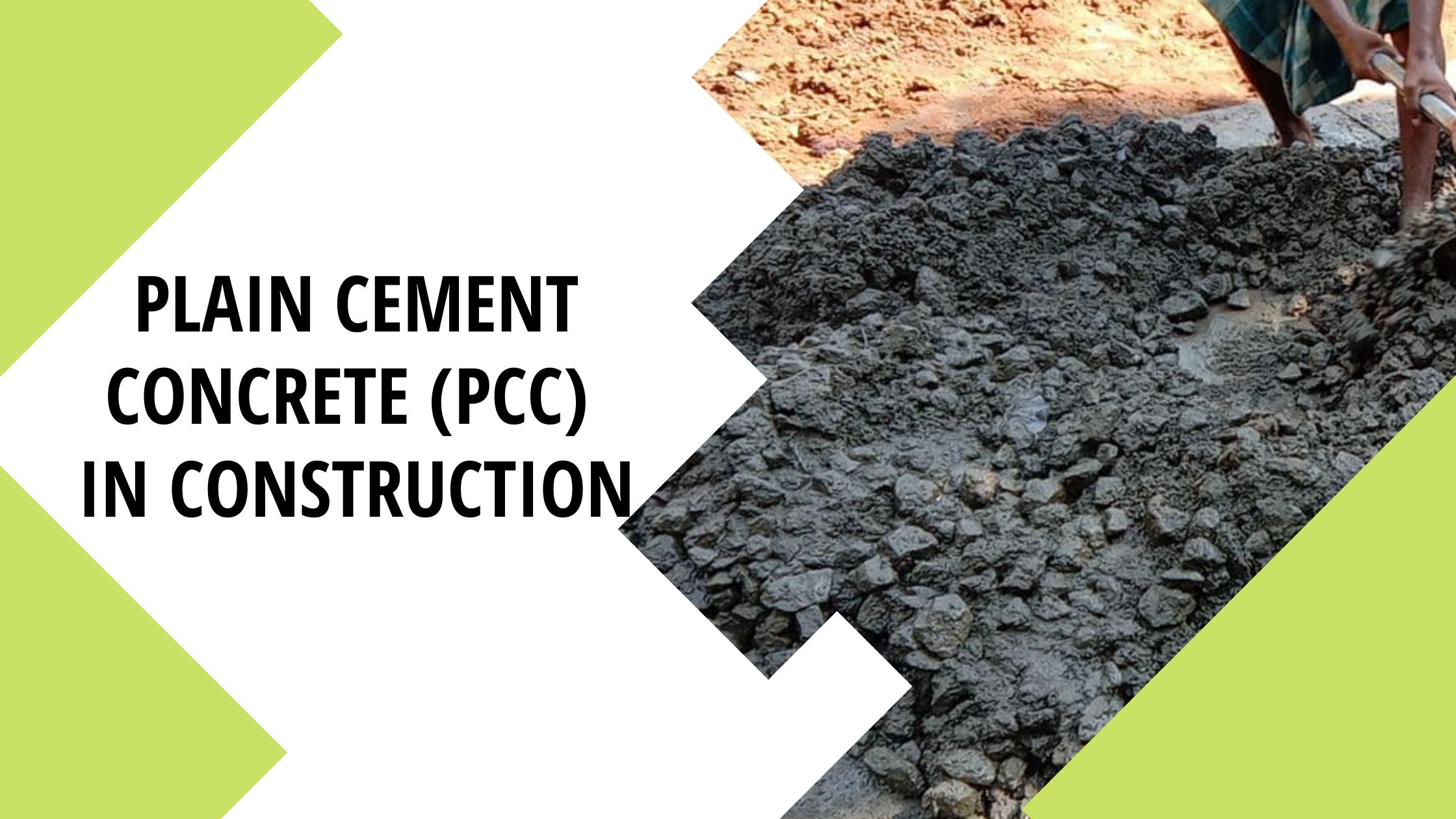What is PCC in construction?
Cement concrete is a product obtained artificially by hardening the mixture of cement, sand, gravel, and water in predetermined proportions. When these ingredients are mixed, they form a plastic mass which can be poured into suitable moulds, called forms, and set on standing into a hard solid mass. This is known as Plain Cement Concrete or PCC. PCC has several applications in the construction industry and today we are looking at why it is necessary to do PCC before foundation.
Setting time of PCC
The chemical reaction of cement and water in the mix is relatively slow and requires time and favourable temperature for its completion. Initially, when cement is mixed with water, it forms a paste. With the progress of time, this paste loses its plasticity and hardens into a solid mass. This full cycle is known as the Setting time of Cement.
Setting time of cement may be divided into three distinct phases.
The first phase, designated as the time of initial set requires from 30 minutes to about 60 minutes for completion. During this phase, the mixed concrete decreases its plasticity and develops pronounced resistance to flow. During this time, cement can be moulded into any desired shape.
The second phase known as the final set may vary between 5 to 6 hours after the mixing operation. During this phase, concrete appears to be a relatively soft solid without surface hardness. It is during this phase that cement attains the shape of the mould in which it is cast.
The third phase consists of progressive hardening and an increase in strength. The process is rapid in the initial stage, under about 1 month after mixing, at which time the concrete almost attains the major portion of its potential hardness and strength.
Depending on the quality and proportions of the ingredients used in the mix, the properties of concrete vary. Concrete has enough strength in compression but has little strength in tension. Due to this concrete as such is weak in binding, shear, and torsion. Uses of plain concrete are limited to applications where great compressive strength and weight are the principal requirements and where tensile stresses are either totally absent or extremely low.
Why is it necessary to do PCC before foundation?
The hard rock strata on top of which the foundation of the building rests are typically much harder than a normal PCC layer. Then a question would naturally arise as to why a PCC layer is still required under the footing. Let’s look at the top reasons!
Additional Reading: How to choose the best type of Cement?
How is PCC before foundation done?
The layer of PCC before foundation is just lean concrete as the objective is to just level the surface. There is no expectation of additional strength from this PCC layer. Therefore a 100-150mm of PCC thickness would suffice. A cement: sand: aggregate ratio of 1:5:10 or 1:4:8 is followed.
Additional Reading: Shallow and Deep Foundations
Watch this video from one of our worksites to see how PCC layer is applied before foundation.


